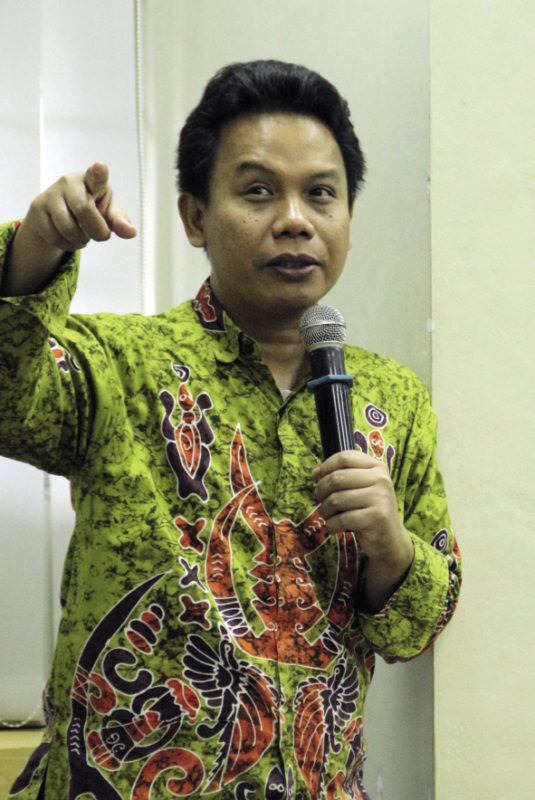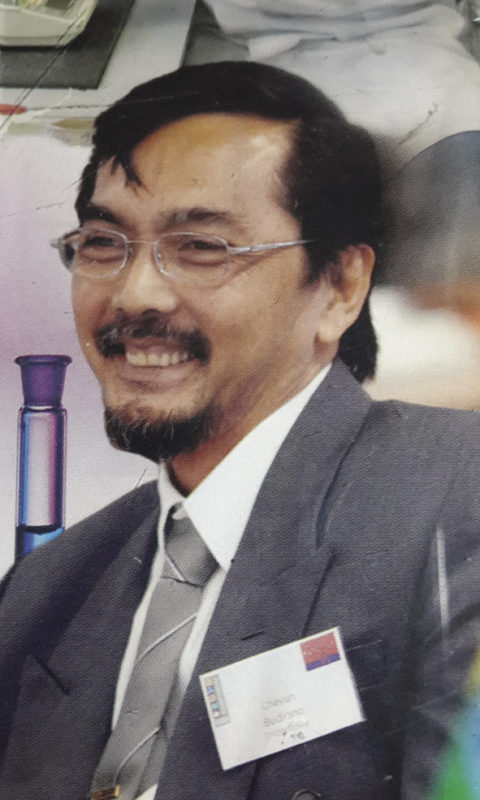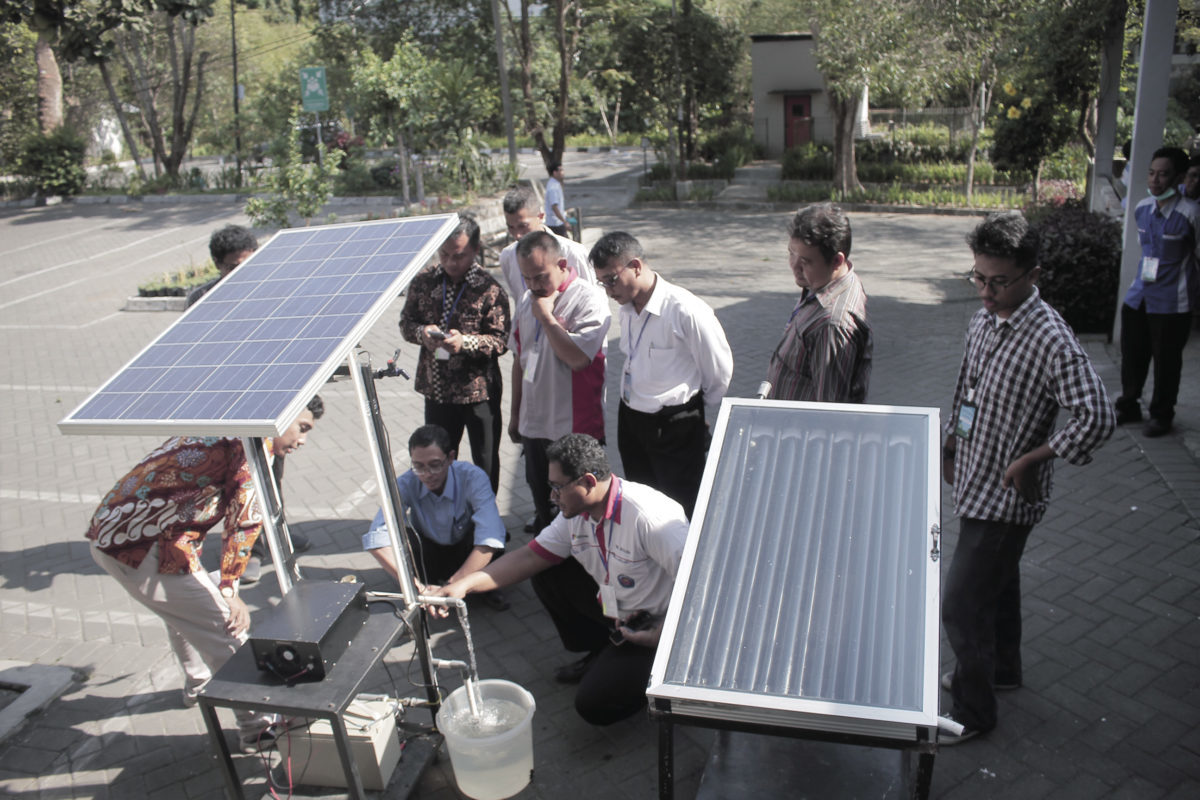From pv magazine 12/2019
What do you think about the possible solutions for rural electrification in Indonesia?

Ahmad Agus Setiawan: For these rural areas, especially areas that are prone to disaster, we need to adjust with local resources that are available there. Indonesia is a coastal country, so to develop grid connections between islands would be extremely expensive. It is better to develop distributed power generation based on local renewable sources and then connect the various islands’ power generation into one virtual control system.
Basically, we often use photovoltaic power for rural electrification because the country is exposed to the sun most of the year, and PV is a mature technology.
Other good options for islands are wind and biomass. However, we still use the generators that are powered by fossil fuels as back-up if an electricity shortage happens. Our challenge is how can we reduce fossil fuel consumption and rely on renewable energy.
What are the challenges in rural area electrification, and what are the possible solutions?
The main challenge is access to the field. To go to an island, for example – Marampit, at Indonesia’s border with the Philippines, located north of Manado [North Sulawesi] – I needed to change planes three times and then take a fast boat.
Other challenges are politics, local conflicts, and security threats in those areas – for example, the Wamena conflict that just happened in Papua. There is a vast development gap there, and the infrastructure still needs to be improved.
I facilitated collaboration between Universitas Gadjah Mada (UGM) students and the Ministry of Research and Technology to create a hybrid power system. In Bantul Jogjakarta, we created a prototype hybrid power system with wind, PV, and battery storage as a source of electricity for the local tourism business there.
I also collaborate with the regional government to develop a basic electricity infrastructure and we conducted a workshop for young people with a technical background in electrical engineering to function as “agents of change” to promote electrification in rural areas. These young people come from the backwoods of Indonesia. After six months of training, they will be sent back to develop and advance electrification there.
As a member of the research team for the Indonesian-Australian Renewable Energy Super-grid, what is your vision for Indonesia’s renewable energy development?
What I found interesting is that Australia wanted to establish a grid connection with Singapore. The energy challenge is enormous, and if Indonesia does not understand that, we will only be left out of this. Other countries plan on increasing the percentage of renewable energy sources, and they have come out of the fossil-fuel cradle.
The opportunity to connect an Australian-Indonesian super grid has entered our minds. But is it a priority? As long as there are many other options available, this super grid is going to be postponed. Logically, northern Australia can help electrify eastern Indonesia, but this will be another discussion in the political sphere.

What are the critical challenges for you while developing electricity supply in the rural areas of Indonesia?
Chayun Budiono: The main challenge to electrify remote areas of Indonesia is that the peoples’ purchasing power is still low, and that they need affordable financing. Another challenge, especially for the private sector, is that they must arrange for permits to obtain the right to provide electricity in remote areas. Usually, the permits will be delayed due to the requirements of Perusahaan Listrik Negara (PLN), the state-owned electricity company.
How is this best approached? What are the financial models you have designed for rural areas in Indonesia?
In general, rural incomes are low. But in fact, the people are burdened with high energy costs. For example, on Rote Island, access to electricity is limited – the people mostly still use kerosene lamps to light their homes. These lamps emit only 30-55 lumens, and the kerosene oil costs approximately IDR 5,000 ($0.35) per day, meaning that in one month they spend 150,000 IDR. If we provide electricity they will get much brighter lamps, at 200 lumens.
They can buy a solar home system at a price of around IDR 2 million, so the investment is returned quickly. But spending IDR 2 million in one go is difficult, because many people do not have a steady income. We need to build a mechanism for a proper business model.
In the future, they will be able to pay daily with vouchers online. We are developing products that could facilitate that. Our Pico Solar System, with pay-as-you-go payment, is going to be on trial next year. People can pay daily and enjoy electricity directly – this concept responds to rural life patterns and provides quality light.
Another concept is peer-to-peer energy. If we use a centralized system, we will be burdened with land costs. The cost of purchasing land for the installation of solar panels is high. With a peer-to-peer system, we make use of the rooftops of houses instead. Here, the problem is when we talk about the needs of each household. One house may need less energy while the other requires more. Peer-to-peer will connect the buildings and facilitate energy transfer between them, and later on there will be a fair payment mechanism.
Do you think the recent regulation on rural-area development access has a significant role in developing Indonesia’s off-grid electrification?
The Ministry of Energy and Mineral Resources (MEMR) Regulation No.38/ 2016 for electrified remote areas is good in theory. However, at the implementation level it still faces many obstacles, because the competence of local governments and PLN officials regarding renewable energy policy is still low.
Interviews by Sorta Carol
This content is protected by copyright and may not be reused. If you want to cooperate with us and would like to reuse some of our content, please contact: editors@pv-magazine.com.








For a very long time, solar has always been my dream.i a society where you always have unreliable, interrupted power supply. In the midst of all these,I stumbled into this idea of solar which looks to me like is impossible.but with this innovation, how can I get it in Niger state of Nigeria?